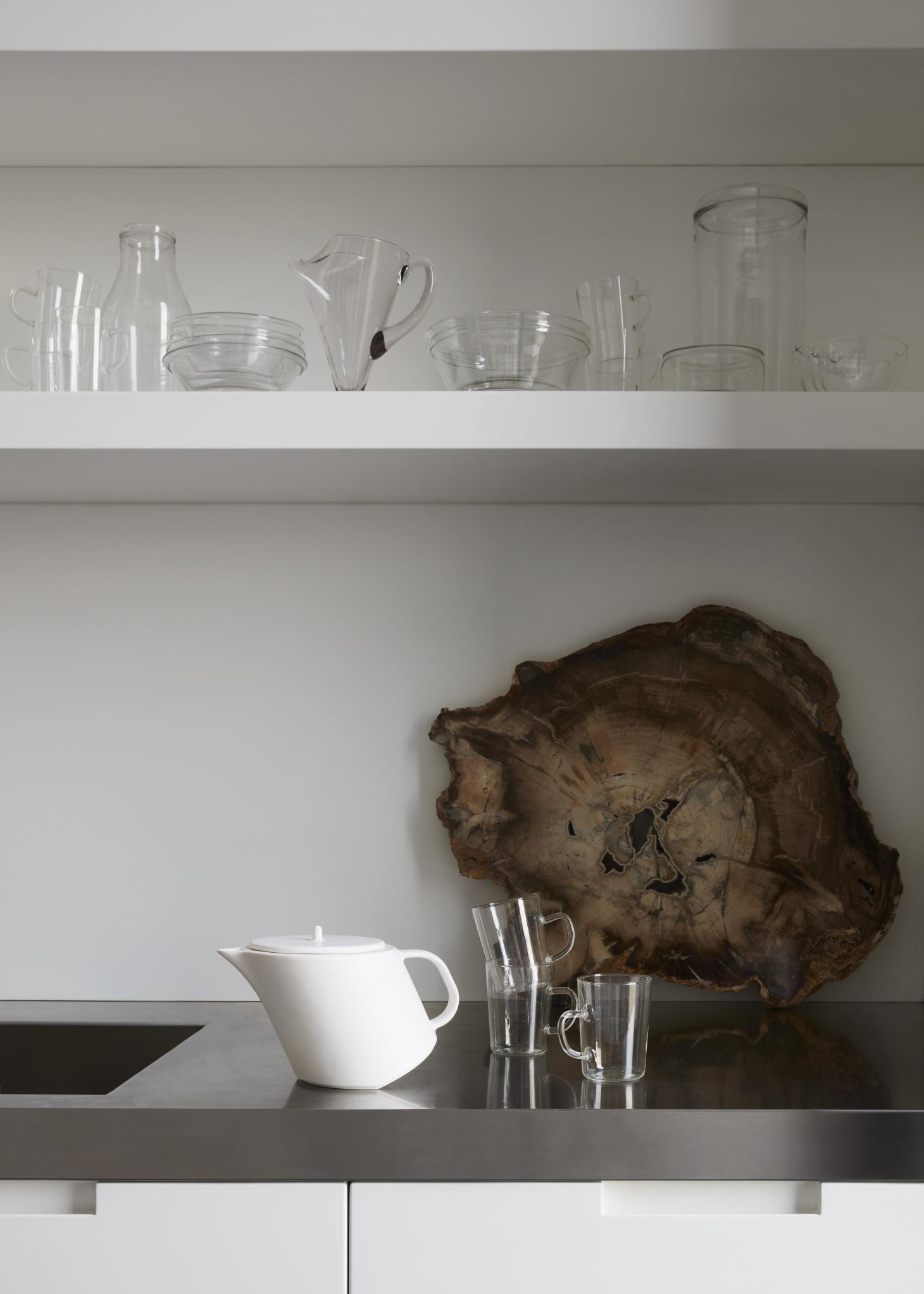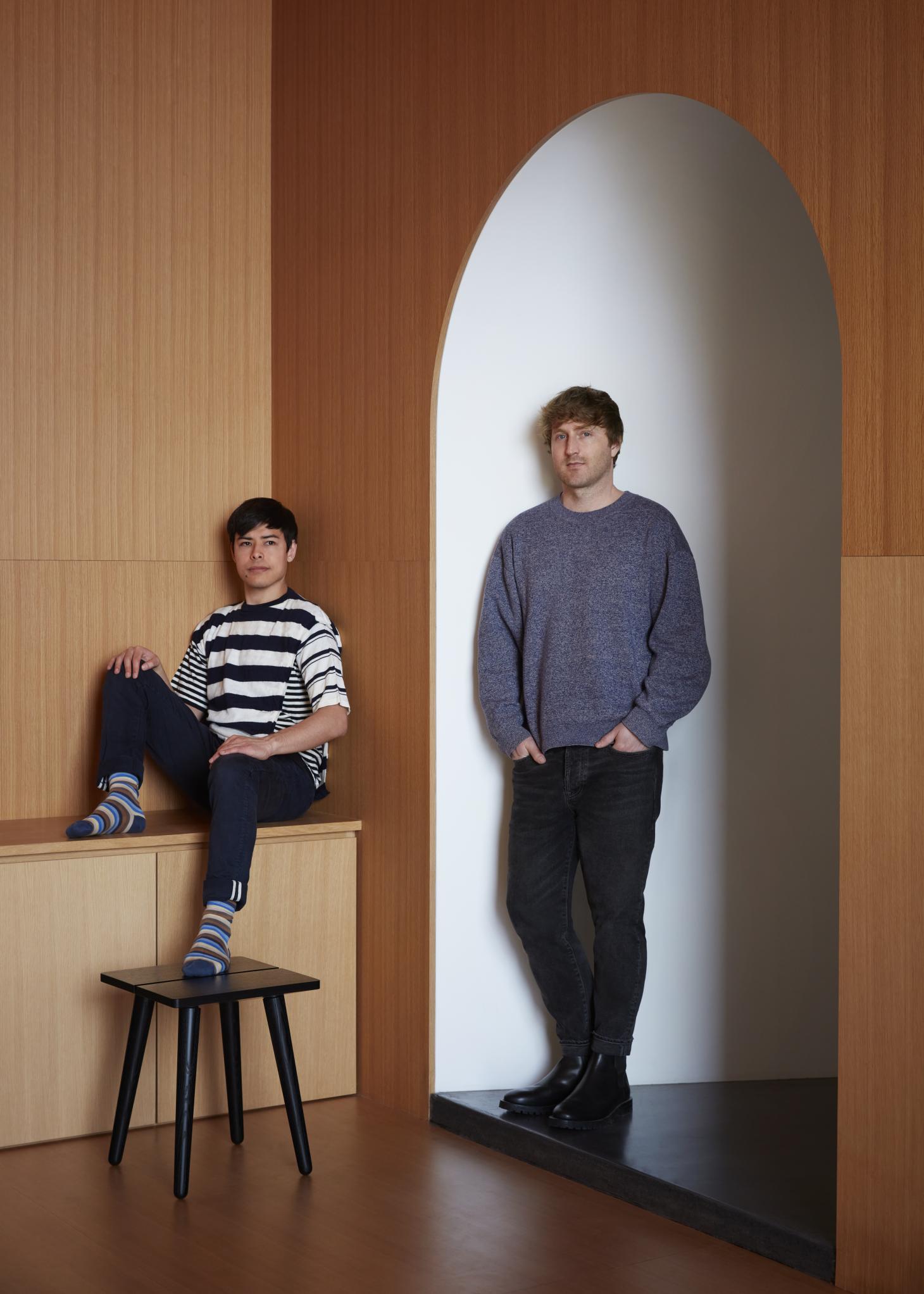Studio Seitz brings Swiss craftsmanship to its new Williamsburg location
Studio Seitz’s Kevin Seitz and Rob van Wyen are preparing to open their first showroom – in a former babka factory in Williamsburg, which doubles as their home

Kevin Seitz and Rob van Wyen launched Studio Seitz in 2019 with the mission to regenerate declining specialist artisanal businesses, in particular those they had first-hand knowledge of. ‘We had this desire to keep alive these very niche yet dying crafts, working with individual tradespeople,’ says Seitz, who is descended from generations of Swiss makers in Berneck, known for its ceramics.
Designed from necessity, built to last
‘Creating things out of necessity,’ they say, is the lynchpin to their line of furniture and lighting, which includes a wooden bench, a stool, a dresser, brass candle holders, a hand-blown frosted glass desk lamp and more. Their new ‘Wall Mirror’ references a traditional Alpine milking pail. The carving of the wooden frame is done by Reto Mösli — one of only around four experts in the world who still carve using this technique, according to Seitz.

Studio Seitz’s ‘Stabellenstuhl’, bedside table and wall mirror. ‘The carving details and metal hand-stamping are inspired by the traditional dress of Swiss farmers, who would take the cattle up into to the mountains in the spring and bring them back down in the fall,’ says Kevin Seitz
Unfussy and pared back, Studio Seitz’s designs are shaped by purpose. ‘We find great value in cultural objects that may be ubiquitous or often overlooked,’ says Seitz. ‘The biggest reward for us is to find a way to redefine how we may look at a seemingly mundane and sometimes dying tradition – reinvigorating its purpose and appreciation.’
Nevertheless, the minimal aesthetic belies deep consideration. The pair’s teapot, for example, was an evolution of Seitz’s college thesis, which he wrote on third-culture kids: children who grow up outside of their parents’ culture. Seitz, who has a Swiss father and a Malaysian mother, was born in Spain and lived in Manchester before moving to the US when he was ten. ‘For me, being Swiss-German and Malaysian Chinese is like a very large part of my identity. I wanted to create a physical object that represented the conceptual space of the in-between, of dual cultures that are usually on opposite ends. So it was about marrying Chinese tea customs and my grandfather's ceramics together.’

Kevin Seitz comes from a long line of ceramicists. The handcrafted teapot is inspired by Chinese tea customs as well as his Swiss heritage
Collaborative craftsmanship
Central to Studio Seitz's work is collaborating with the community of Swiss makers. ‘A lot of the people that we work with are actually family, friends, or people that have worked with our family before,’ says Seitz, whose great-grandfather was an established ceramist. Those who are not blood relations have become a family through the collaboration of their work, sharing their particular techniques honed over years, even generations.
Sixth-generation metalworker Adalbert Fässler hand-stamps the ornamented brass pulls on the drawers of the dresser and bedside table; fourth-generation master joiner Urs Mätzler (‘his craftsmanship is the benchmark by which all other artisans are judged – honesty instilled from the passion and care that can never be replicated in mass manufacturing’, say Seitz and van Wyen) creates much of the woodwork; fifth-generation craftsman Thomas Seitz’s family-run workshop produces the candleholder, pendant light, desk and table light and hardware for the dresser and bedside table.

The duo staged a shoot at a house in Ghent designed by Thomas Phifer and Partners. ‘It was very brutalist, all concrete,’ says van Wyen. ‘Architecturally, it felt very simple and clean, but also homey and warm with lots of wood’
Responsible production
Reflecting the simple mountain life led by original Swiss makers, Seitz and van Wyen use only natural, locally available materials, often doing away with nails and screws (their popular ‘Stabellenbank’ stable bench is engineered to be held only by the position of its legs and its own weight). They favour solid European ash, grown nearby in Eastern Switzerland. ‘They're very strict in Switzerland on regulation, especially with laws around chopping down trees and things like that. For us to be certified “Swiss Made”, it was a six-month process,’ says van Wyen. ‘They interview everyone that we work with, they track down every material that you use.’
Receive our daily digest of inspiration, escapism and design stories from around the world direct to your inbox.
Seitz concurs: ‘We only use solid wood. We want to make heirlooms. The idea is that something lasts forever and you hand it down.’
A new Williamsburg location for Studio Seitz
This summer, the pair will open their first showroom: a 1,300 sq ft former babka factory, built in 1912, which they have ambitiously and painstakingly renovated themselves over the past five years. The space, which is also their home, will provide an environment to showcase how their designs fit into everyday life. Every detail is considered, such as the stainless-steel banister that echoes the kitchen cabinets.
The space will also house a curation of design elements from Swiss and Danish brands with which they have an affinity, including Finn Juhl ceramics, Reform kitchen and closets, pieces from Vipp, Ferm Living, Sonnhild Kestler textiles, and Appenzeller handicrafts.

Studio Seitz co-founders Kevin Seitz (left) and Rob van Wyen (right) are married. They live and work together in their Williamsburg home and showroom, a renovated 1912 babka factory, opening this summer
Made to order
While some of the popular pieces, such as the bench, are in regular production, every piece is made to order. This allows the pair to administer design tweaks, such as creating a different size or finish. Advocates of slow living, they operate in the same manner they wish their furniture to be enjoyed.
‘We like to take our time. Like if something’s not quite working out in that moment, then we'll just wait until we find the right person, the right thing, the right vibe,’ they say. ‘We don't want to make stuff for the sake of making stuff. Each piece has to be special, and we want to make each person happy.’

The solid ash dresser with hand-stamped metal handles and hand-blown frosted glass desk light

The ‘Stabellenbank’ stable bench is inspired by traditional simple benches found in Alpine taverns and farms. Four hand-turned legs are engineered to exist without screws or nails, the bench held together only by its own design and weight

The solid ash ‘Stabellenstuhl’ is compact and versatile, ideal to use at the dinner table, as a side table, or in the bedroom or bathroom

‘We only use solid wood. We want to make heirlooms. The idea is that something lasts forever and you hand it down,' says Kevin Seitz

Each of the concentric frosted glass shades on the pendant light is individually cut with patterns inspired by traditional Swiss ceramics

‘I think there are only four families left in Switzerland, the world, really, who do this type of carving,’ says van Wyen, of the intricate wooden band that surrounds the ‘Wall Mirror’

Made from solid brass, the candlestick holder is reversible, its form inspired by traditional milking pails from Appenzell
Information
Tilly is a British writer, editor and digital consultant based in New York, covering luxury fashion, jewellery, design, culture, art, travel, wellness and more. An alumna of Central Saint Martins, she is Contributing Editor for Wallpaper* and has interviewed a cross section of design legends including Sir David Adjaye, Samuel Ross, Pamela Shamshiri and Piet Oudolf for the magazine.
-
 Terrified to get inked? This inviting Brooklyn tattoo parlour is for people who are 'a little bit nervous'
Terrified to get inked? This inviting Brooklyn tattoo parlour is for people who are 'a little bit nervous'With minty-green walls and an option to 'call mom', Tiny Zaps' Williamsburg location was designed to tame jitters
-
 Let’s hear it for the Chopard L.U.C Grand Strike chiming watch
Let’s hear it for the Chopard L.U.C Grand Strike chiming watchThe Swiss watchmaker’s most complicated timepiece to date features an innovative approach to producing a crystal-clear sound
-
 Form... and flavour? The best design-led restaurant debuts of 2025
Form... and flavour? The best design-led restaurant debuts of 2025A Wallpaper* edit of the restaurant interiors that shaped how we ate, gathered and lingered this year